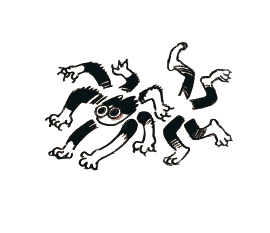rarely post here, i only use this site to stalk tags really
Don't wanna be here? Send us removal request.
Text
genazo and mp100 share A Lot of similarities but they also share this one hyperspecific fan phenomenon of a short-lived background character getting a lot of fanarts for some reason
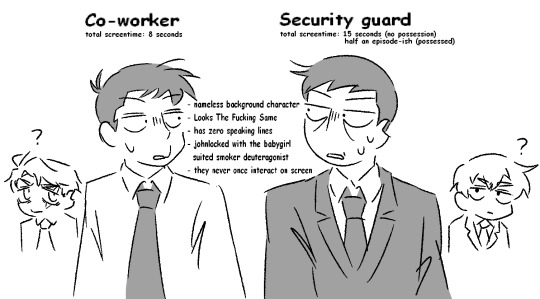
#this is not /neg i am an enjoyer of both pairings#ekurei#doryomizu#mob psycho 100#mp100#gegege no nazo#genazo#i know yoshioka is technically not nameless but there is no way to know his name from just the main source material#one hell of a coincidental similarity: mizuki and yoshioka have chipped left ears#ALSO. AKIO OTSUKA. IS THE VA FOR EKUBO AND OLD MIZUKI IN THE AKUMA-KUN ONA CAMEO. ISN'T THAT CRAZY.#seriously there is a bajillion connections between these two medias it drives me insane#bork doodles
47 notes
·
View notes
Text


Important news: Coworker-kun was redrawn in the True Birth version. He seems to be working instead of staring at his desk now!
#the most important change of the director cut#saw a jp fan said that coworker-kun finally beat the jacking off under the table allegations and i haven't stopped thinking about it#good job coworker-kun for actually working#gegege no nazo
18 notes
·
View notes
Text




romance is in the air
#oh i love this so much#contrary to popular belief: the ghost tribe has negative rizz#gegege no kitaro
244 notes
·
View notes
Text
Genazo cheat sheet ROUND 2!
I received questions about the movie here and on twitter, so after mostly focusing on the script in this first post, let's go for a second round of "taking a deeper look into Gegege no Nazo"!
Under the cut will be a collection of notes about the context around the movie, comments on specific scenes, and such. This time there's no effort to follow the movie chronologically, sorry. I also wanted to talk about each of the Ryuga individually, and list trivia and easter eggs, but the post became too long and disjointed, so this will be for, well, round 3.
I still hope it will answer interrogations you might have had, and help you enjoy the movie more!
Of course, there will be spoilers for the movie under the cut.

"Gege- !"
Upon seeing the man Osada's henchmen have captured, young Nezumi exclaims "Gege-!" before being pulled back. Remembering this, Mizuki decides to call that man "ゲゲ郎", "Gegero" : basically that same "gege" sound with a common kanji put at the end of male names (the same "ro" as in "Kitaro"), in an attempt to form, well, something that sounds like a male name.
Initially, the manga featuring Kitaro was called "Hakaba Kitaro", taking after the similarly named kamishibai story (albeit with a different spelling), then "Hakaba no Kitaro". Shortly before the start of its anime adaptation, the manga's name has been changed again to "Gegege no Kitaro", in an effort to sound less ominous and children-friendly ; it also marks a shift in Kitaro's character, fighting for peace between humans and yokai. In universe, "ge ge ge" is the sound of bugs, animals, and nature as a whole singing a song of praise for Kitaro at the end of every story :

Outside of the story, "Gegege" is inspired from Mizuki Shigeru's own childhood, when he couldn't pronounce his name properly and it'd come out as "gege" or "gegeru".
And now in Genazo, Kitaro's fathers are respectively named "Mizuki" and "Gegero"!
The Birth of Kitaro
It's the name of the movie, of course : "The Birth of Kitaro : Mystery of Gegege", but also the first chapter of the rental manga, which went through multiple remakes through the years.
The ending credits of Genazo feature illustrations that are mostly taken from said chapter.



The post-credit scene, too, matches the original story, however with one crucial change ; Mizuki has a flashback of Gegero in front of cherry blossoms (a memory that probably subsisted because it was when Gegero put the chanchanko on Mizuki's shoulders?), causing Kitaro's fate to be different from his manga counterpart.

Speaking of crucial change, the scene at the beginning of Genazo when Mizuki leaves his office desk to meet with the blood bank's president has been noted as an extremely important moment which separates the Hakaba Kitaro timeline and the 2018 Gegege no Kitaro timeline.

Look closely, and you'll notice there are two shadows in this scene: one for the Mizuki who decided to head for Nagura Village, and another for the Mizuki who didn't.
The Blood Bank
This is a Vast topic that I will clumsily summarize here, but I think it's an important point to have in mind when watching Genazo (as well as when reading the Birth of Kitaro stories and the Bloodsucker-tree story as well)
Blood donations were not commonplace at all in post-war Japan, and "blood banks" were a for-profit business : people came to sell their blood, and that blood was sold to hospitals. This led notably to a population affected by precarity regularly coming to such banks, sometimes multiple times a day, to sell their blood at the cost of their health and often their own life.

In this scene, the crowd here are people waiting to sell their blood.
Of course, in Genazo it parallels with the Blood Cherry Blossom : the blood of the Ghost Tribe is drawn to produce "M", the secret of the Ryuga's large wealth. But wealthy bloodsuckers target humans as well - as Mizuki says himself, anywhere, everywhere, the weak is exploited. But he was part of that exploitation, and that's a price he will eventually have to pay.
The situation in Genazo is slightly recontextualized, as the original story has Kitaro's mother selling her blood to buy medicine for her and her husband's sickness :

The horror lies in the then real fear of the sick contaminating blood supplies : in this story, patients contaminated by Ghost Tribe blood become ghosts themselves.
I recommend reading this article about the history of Japan's sold blood and how it relates to Shigeru Mizuki's works for a much better and deeper understanding of the topic!
"Diving into the underground like moles, the once insignificant Ghost Tribe..."
Otome's line finds its origin, again, in the original Birth of Kitaro. The scene where Gegero explains to Mizuki the history of the Ghost Tribe also uses visuals from the manga.

"You can't see things just by trying to see them with your eyes."
"It actually helps to cover one eye.", says Gegero.
I mentioned before how this line reminds Seki of "The Little Prince". This philosophy permeates Gegege no Kitaro as a work, and seems to be found first in "Nonnonba to Ore" :

There's a repeating motif involving the left eye in Gegege no Nazo, appearing to be covered (Gegero's), wounded (Mizuki's), or missing (Kitaro's). Moreover, the "curse" of the Kyokotsu targets the left eye of all its victims, and Sayo has a beauty mark under her left eye.
It's by seeing less that the invisible becomes visible ; and it's through his scarred left eye that Mizuki becomes able to see the supernatural.




After losing his memory, he is portrayed with his left eye obscured in the ending credits:

Why does Mizuki have white hair / become amnesic at the end of the movie?
I wanted to reply to this in the form of an ask but I got this multiple times over twitter on tumblr so I'll put it here.
It seems Mizuki suffered the same fate as Kozo : his memory wiped and his hair whitened after being attacked by the Kyokotsu. Gegero specifically puts the Chanchanko on Mizuki before telling him to leave the village : "As long as you wear this, you won't lose your mind". But later, Mizuki chose to make Gegero's wife wear it, covering her stomach, so he ended up affected by the Kyokotsu after all. Though the damage doesn't seem as severe as Kozo's - he vaguely remembers being with a woman, in the credits seems to have kept his sanity, and in the post credit kept a vague memory of Gegero in front of the cherry blossoms.


A bit off topic, but did you notice the soldier's helmet next to Mizuki in this scene? It disappears after a few frames like a ghostly apparition...^^ There are actually a lot of hidden ghosts and yokai hidden in the movie, so keep your eyes open to spot them...! or close an eye, I'm not sure.
(I guess this will be its own post later!)
Jizo statues

Statues of Ojizo-san, or just Jizo, appear not only in the movie but alongside Kitaro in one of the movie posters. They carry different meanings and offer many kinds of protection, but in Japan it is mostly associated with the belief that Jizo protects children, alive or dead, comforting the latter on the bank of Sanzu river. They are often dressed up with bibs, often red as it is believed to ward off evil.
Ghost Tribe powers
Gegero displaying multiple superpowers came as a surprise for watchers whose entry point into this franchise was Genazo. They are all powers Kitaro is seen using in the TV anime, albeit played a bit differently.
At the end of the movie, when the story comes back to present time, it's through an action scene where Kitaro's musical theme is playing as he shouts his signature moves' names - it does a great job suddenly shifting the movie back to the battle shonen genre associated with Gegege no Kitaro TV anime.
While Kitaro, the brave shonen protagonist that he is, likes to shout his moves names, Gegero stays silent (how I'd love to hear him shout "Remokon Geta!", though...).
So on top of oustanding endurance and agility, we have tensile hair (Kitaro uses as "Hair Needles"), flying geta sandals ("Remote-controlled geta"), electricity discharge ("Internal Electricity"), and of course, the spirit hair bracelet for Gegero that becomes part of the spirit hair Chanchanko vest for Kitaro. Ghost Tribe are displayed showing many more powers throughout the franchise, but this is all we see in Genazo...!
Oof! That post has gotten too long already. If you've read this far, thank you! I hope it will improve your enjoyment of the movie somehow, or make you curious to check out more of Mizuki's works and its adaptations.
I have more I wanted to say but it will be for next time!

#gegege no nazo#op i live for your genazo rambles please never stop#GOD HHOW DID YOU EVEN CATCH THE SHADOW THING AND THE SOLDIER HELMET THAT'S SO COOL WHAT#also i can't believe it Just hit me that kitaro's dads names are just. the authors name.#that's so fucking cute god this movie is such a labor of love i Cannot get over it#i love genazo and their conga line of 'what the hell happened to your left eye' characters
88 notes
·
View notes
Text
⬛️🟨⬛️Kitaro Tanjo: Gegege no Nazo English Subtitles⬛️🟨⬛️
Sorry for making you wait! Here it is! English subtitles for Gegege no Nazo!
⚠️Please read⚠️
The following link contains a SUBTITLES FILE only. I will not provide the movie itself. If the movie becomes available in your country, please show your support. If you want to show licensers that there is an interest in the Gegege franchise in your country, you can watch Gegege no Kitaro (2018) on CR and Akuma-kun on Netflix.
Please do not redistribute or edit the file. It's my own amateur translation and amateur subtitling work. Please be aware of this as you watch. I am just a fan and not associated with the movie in any way or form, so my translation is subject to my own interpretation and possible mistakes.
However, I worked hard to convey the story and emotions of the movie, and I hope this file will help you enjoy it as much as I did.
If you have any question or comment, my inbox is open (please be civil!).
🖤💛🖤💛🖤 Finally, thank you SO MUCH!! to everyone in the Kitaro BLGLHL server. Thank you for your precious help, for your support, and for sharing in my passion for this story and its characters. Fujin are the backbone of fandom, really! 🖤💛🖤💛🖤
Well then, without further ado...!
⬛️🟨⬛️GET IT HERE (Mega)⬛️🟨⬛️
#YIPPEEEEE THANK YOU SO MUCH FOR YOUR HARD WORK!!!#jumping back into nagura village immediately with less confusion this time lmao#gegege no nazo
164 notes
·
View notes
Text
Genazo script cheat sheet
I translated Gegege no Nazo to English, and so I spent the last two days knee-deep into the movie script! It was very interesting, and it made me feel sympathy for fansubbers of Yore who would put long translation notes covering the entire screen... I was strong, but not strong enough to put sticky notes all over my personal copy though, so here's a collection of notes and observations from Genazo's script, somewhat following the movie chronologically. I will try to keep each item short.
I hope it helps you take a deeper look into this story!
Of course, this will contain spoilers.
It's...
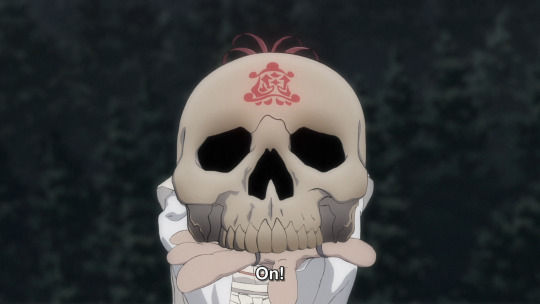
Nagura village's name
Naguramura, or Nagura Village, is 哭倉村.
哭 "naku" means crying, sobbing, wailing.
倉 "kura" is commonly found in place names, for example like in the city of Kamakura. It means a storehouse, a warehouse.
村 "mura" is village.
"Naguramura" is "the village that houses cries."
Ryuga's name
Ryuga is spelled 龍賀.
龍 "ryuu" means "dragon".
賀 "ka" means celebration. You find it on nengajo, greeting cards for the New Year, in the expression "賀正", "Happy New Year".
It gives the impression of a very noble and auspicious name.
"Let's pray for a safe return this time..."
From the exchange between the president and the manager of the Blood Bank, implying that before Mizuki others were sent to Nagura Village.
Train to Nagura Village
It has Gegero's very first line, and I wasn't sure how to translate it.
"おぬし 死相が出ておるぞ"
"onushi, shisou ga dete oru zo"
"You have one foot in the grave."
I initially hesitated putting in :
"The shadow of death looms over you."
But I went for the former. I take no credit for this translation : the trailers for the screenings in Hong Kong were subbed, and this line appears in the trailer so I played it safe and just reused it.
Indeed, the shadow of death follows Mizuki : the silhouettes appearing behind him are all wearing military uniforms.
Gyokusai
On the way to Nagura Village, Mizuki reminisces a dialogue from his superiors during the war :
"Since they've already announced their will to fight to death, it would look bad if they were still alive."
The original text says that the soldiers announced their "gyokusai", or their "honorable suicide". It evokes the idea that being made prisoner or coming back in defeat was an humiliation so great that dying was the most honorable alternative. So indeed, in the eyes of the army, Mizuki and his fellow soldiers surviving after announcing their will to die in battle "looks bad."
Honestly gyokusai deserves its own post given how important a notion it is in Genazo and beyond ; it's the main topic of Mizuki Shigeru's manga "Soin Gyokusai Seyo" ("Onwards Towards Our Noble Deaths"), which is directly referenced multiple times in the movie. Mizuki's war flashbacks are all based on scenes from the manga, and the protagonist makes a silent appearance in a scene. (He's the man with glasses standing behind Mizuki when the officer is telling them he won't be joining them in their suicide mission.)
Kawakami Tetsuharu's "2000 hits"
Upon meeting Mizuki, Tokiya asks him about Kawakami, and Mizuki promises to talk about the story of "Kawakami's 2000 hits" if he gets the chance.
Kawakami Tetsuharu was a baseball player known as "The God Of Batting" , and became the first in the history of Japanese professional baseball to achieve 2,000 hits, playing professionally for 18 years.
"The strange local deity"
Katsunori mentions that the village worships what he calls "a strange local deity" that has its dedicated shrine atop a mountain. The head of the Ryuga family also acts as its shrine priest.
"Local deity" would be 土俗の神 (dozoku no kami) - Interestingly, in the subs provided by Amazon Prime, it reads the homonym "土属の神" (dozoku no kami) instead, changing the meaning to "A strange god of the earth." I genuinely wonder if it's a typo or intentional - as the village suffers from tremors, it would make sense for a god of the earth to be worshipped in order to prevent those, right?
After Tokimaro's body is found, the crowd keeps mentioning "the curse of Nagura-sama", which seems to be the name of said worshipped deity.
Otome calls those tremors "龍哭" "ryukaku", and you may recognize those kanji from earlier in the post : it's "dragon" and "crying" again. I chose to render it as "Dragon's Wail" in the subs - of course, these "wails" and tremors are caused by the Kyokotsu's held captive in the well, but the Ryuga choosing to perceive this phenomenon as a dragon makes sense: the dragon is a manifestation of their karmic debt and anxieties, anxieties that they carry in their family name itself.
(Interestingly, have you seen the big specter paw looming over Mizuki and Katsunori as they are first seen entering the Ryuga's mansion?...)
Tokisada's will reading scene:
- Otome is sitting in front of a door where cherry blossoms are painted.
- Tokisada's portrait is hanged on top of a painted dragon holding a pearl. It seems like a grand display of power and virtue at first, but if you take into account that the dragon represents Kyokotsu, plus Tokisada's fate at the end of the story... A dragon holding a, er, ball shaped object, has now a completely different impression in hindsight, doesn't it?
- Interestingly, Katsunori is sitting so that he appears in the dragon's maw, foreshadowing his defeat against Tokimaro who is sitting closer to the pearl.
Ore wo koroseeee!
Mizuki, who previously said he didn't want to die, is now seen running on the battlefield, shouting :
"殺せ! 殺せ!俺を殺せ !"
"korose! korose! ore wo korose!"
"Kill.. kill.... Kill me!"
It gives the initial impression that he's shouting to himself an order to kill his enemies, but then add the object "me" : as much as he wants to live, he's bracing himself to perform his suicide in battle.
It has become an iconic line so I was nervous about it. Because of the context, I ended up using this to keep a natural flow :
"Die... die.... let me die!"
Mizuki and Gegero's first exchange in Nagura Village.
...which also became very popular lines.
"1本 くれんか ?"
"ippon kurenka ?"
"やだね~"
"ya da ne~"
"Can you give me one?"
"No way~"
Gegero will repeat that "iya da ne / no way" at the end of the movie, to Tokisada.
Sengoku era armor
By inserting his fingers into its nose, Osada accesses a secret passage. Interestingly, it's when he approaches the same armor that Yamada falls into the basement at the beginning of the movie. It's still doing its job after all these years!
Keiji Sada
Hinoe mentions how Mizuki looks like Keiji Sada, a popular actor from the 40s to the 60s. He's super handsome! Google him!
Tokyo Tower
When talking with Tokiya, Mizuki mentions how "The world's tallest radio tower will soon be built in Tokyo." It refers to Tokyo Tower, finished in 1958, two years after the year the movie takes place in.
Gegero's "Hurry, go."
He might sound like he doesn't want much to do with Mizuki at this point, but he will tell Mizuki this exact same line with a different tone at the end of the movie.
Nezumi Otoko rowing the boat
When Mizuki fails to row the boat, he asks Nezumi Otoko to show him how to do it, to which he smugly answers "Why would I?" ("なんで俺が?") using "ore", a very casual pronoun to refer to oneself. But after Mizuki asks him "Please, sensei.", Nezumi quickly switches to the more polite and meek pronoun "boku". "Sensei? Sensei? Me?" (先生?先生?僕が?)
Maybe it's not important, but I wanted to talk about Nezumi Otoko and I found it very cute, okay. Mizuki mentions how Gegero is easy, but so is Nezumi.
Additionally, when rowing the boat, Nezumi sings:
"Yo soro~ Yo soro~"
"ヨーソローヨーソロー"
It's a kind of work song sung to stay motivated and keep a rhythm. "Yo soro~" comes from "ようそろ", "to keep it [the boat] steady".
I left is as "Heave-ho~ Heave-ho~" but I was this close to make him sing Row, row, row your boat, gently down the stream... (No.)
Nonnonba
After Mizuki learns of yokai, he tells Gegero:
"When I was a kid, the old lady who took care of me used to tell me stories about yokai often. I had no idea it was all real."
It refers to Mizuki Shigeru's work "Nonnonba to ore", a novel then a manga which also received two TV adaptations. It's the autobiographical story of his childhood in Sakaiminato relating his experiences with an old lady he called Nonnonba, who told him about yokai stories, and thus sparked Mizuki's own interest in yokai, inspiring him to include them in his stories in the future.
"You can't see things just by trying to see them with your eyes."
As Seki Toshihiko (Gegero's VA) mentioned, this line is reminiscent of one of the fox's line in Antoine de Saint-Exupery's The Little Prince :
“And now here is my secret, a very simple secret: It is only with the heart that one can see rightly; what is essential is invisible to the eye.”
"M"
While an elixir of immortality remains fictional, there is still some truth in the story of the "M" drug.
It's not confirmed by any mean, but "M" could very well stand for Metamphetamin ;
Japanese pharmaceutical companies were contracted during the war to produce metamphetamines towards war effort.
Tablets under the commercial name "Philopon" (also romanized hiropon) were distributed during WWII to soldiers and workers to increase productivity, leading to an addiction epidemic continuing well after the war, when the surplus production was dumped into the domestic market.
Kyokotsu
As usual in Gegege no Kitaro, it takes inspiration from foklore. So just like Gegero explains in the movie, Kyokotsu is the spirit of someone who died in a well, holding a grudge driving them mad.
"Love? That is some grandiose phrasing."
I guess the Japanese language is famous for being cautious in expressing one self, showing modesty and restraint when it comes to expressing feelings. The story of novelist Souseki Natsume choosing to translate the English "I love you." into "月がきれい" (tsuki ga kirei), "The moon is beautiful." is famous after all.
It's why Mizuki shows surprise at Gegero's many casual and direct uses of the word "love", 愛 "ai", an habit which he got from his wife.
Terrace scene
The Onmyoji are practictioners of Onmyodo.
The Kidoshu are a group of yokai-hunting onmyoji who appears in various Gegege media, most recently with Rei Isurugi in the 2018 anime.
Urakido, the "back/reverse/hidden" kidoshu, are as described by Gegero members of the Kidoshu who were banished for using what I translated as "forbidden techniques" as a shortcut. They were eventually employed by the Ryuga family.
To be more precise, the Urakido's technique is qualified as "外法" (geho), which means outside of Buddhist teachings with a negative connotation, relating to occultism and sorcery using skulls ("外法頭" geho atama, that Osada and Tokisada are seen using in the movie.)
Hence the idea of "forbidden" art or technique.
It's similar to the word "外道" (gedo), which also means outside of Buddhist teachings, but in the more neutral sense of "pagan" or "profane".
"On!"
The Japanese pronunciation of the mantra "Aum".
Memed to death by fans. Poor Osada.
"Come! All of you who hold grudges!"
Sayo's "Come! All of you who hold grudges!" line is repeated by Gegero at the end of the movie with the same wording.
Hinamatsuri and Hanami
At the end of the movie, Tokisada is sitting enjoying sake and hishimochi, sitting in front of a golden screen and on a red fabric. It's reminiscent of Hina matsuri, a spring festival celebrating little girls, where a specific doll set is displayed in celebrating households a few days before the festival. At the top of the doll set is the emperor and the empress, typically sitting on a red carpet in front of golden screens.
He invites Gegero and Mizuki to stop and enjoy the cherry blossom like they would be celebrating Hanami, or flower viewing ; an activity during spring where picnics are enjoyed under cherry blossoms in blooms. Sweet sake and pink, white, green colored dango are associated with Hanami.
The Blood Cherry Blossom
It's called 妖樹血桜 (yojuchizakura) "Bewitching Tree Blood Cherry Blossom", by Tokisada once in the script. Which is really a mouthful in English, so I consistently called it "The Blood Cherry Blossom".
"妖" is the same "yo" as in yokai, and it means suspicious, mysterious, bewitching. "樹" "ki" (or "ju" when compound), is tree.
So 妖樹 yoju, is a monster tree - meaning the tree itself is yokai...?
"It's a price we'll have to pay."
THE Mizuki line.
"ツケは払わなきゃな !"
"tsuke wa harawanakya na!"
I never thought about it before, but when it was finally time to translate this line I realized : what subject should I use? I? We? Who is paying the price?
Just before, Tokisada says:
"This... If you break this, the Kyokotsu will go wild... It'll destroy the entire country!"
And throughout the movie, there is that idea that all the villagers carry karmic debt, being agent of exploitation and imperialism by working for the Ryuga (Gegero explicitly says so.) - but not just them, Mizuki as well, was perpetuating this exploitation, was part of this collective responsibility, up until his encounter with Gegero changed him. His actions have had consequences, and he knows it, so...
made the more sense to me.
"Hahahaha! It's a price we'll have to pay!"
___
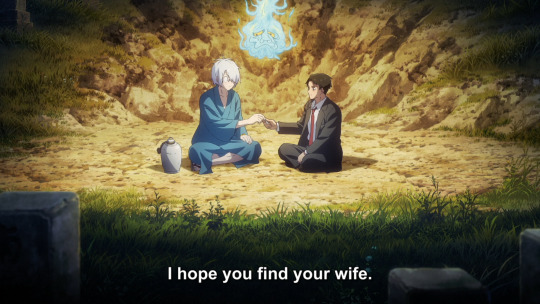
And that's all I wanted to say for today. Well... actually there's more, but this post has gotten way too long already. If you've read this far, thank you so much!
I hope you enjoy Gegege no Nazo as much as I did!
#gegege no nazo#gegege no kitaro#ahhh thank you so much for this i've been rewatching the raws unsubbed lol#also i very clearly remember THE mizuki line in the theatres being translated with “you” instead of “we” but i love your version a lot more#i still have this movie spinning in my head like rotisserie chicken for the past month augh
105 notes
·
View notes
Text
Newcomers to GeGeGe no Kitaro trough GeGeGe no Nazo must be having a wild ride. You saw a buddy cop style movie with two guys : yokai (Gegero) and human (Mizuki) meeting and investigating a dark secret related to the disappearance of Gegero's wife. On the way they formed a deep bond and Mizuki ended up adopting Gegero's newborn baby after tragic events befell the yokai couple. The ending is mostly happy, but leaves a lot of question, you still want to see how human guy's life with the child will be, the hardship they'll have to face, the many heartfelt moments they'll share with each other. Then you found out this movie is part of a pretty big franchise in Japan that has seen a bunch of adaptations, none of which are fully translated sans for the 2018 series. Fortunately, that series shares the same continuity which the movie above. It seems you hit the jackpot. But then you watch it and Mizuki is only mention in passing once in a while, in fact you don't even know what became of him. The story instead focuses on the baby who has now grown up to a ten-something in terms of look boy (Kitaro) and his adventure fighting evil yokai to protect humans. So you started digging a little bit and found out Mizuki, and therefore Kitaro's birth has not been explored much in animated form save the mini series Hakaba Kitaro. Even then, this adaptation is very faithful to the early manga. As such, everything (the setting, the story, the personality) and most importantly Mizuki and Kitaro's relationship appears so, for lack of a better world, cold and distant from what you envision you may even dislike it. Though, if it manages to keep you interested, it's still not to bad: you have a bunch of contents to digest and won't gets bored easily considering every adaptation do thing a little differently.
#gegege no nazo#it's funny cuz this is literally me like the past week after finally getting to watch the movie lmao#i saw the bastard salaryman in action and got obsessed and thought i desperately need more content of him#excitedly ran into hakaba kitaro only to come out of it with smoke coming outta my head#this franchise is so interesting tho but definitely funky when you try to get into it through one character who barely held any presence#i thank and blame the banger fanarts on my timeline for making me curious about those two dads and now i have brainworms agh
56 notes
·
View notes
Text


#ah these polls are evil#senshi dominates all but i can't not vote for my wife#especially this panel of him#i love my scruffy tired overworked artist wife
99 notes
·
View notes
Text




Dungeon Meshi - Falins Makeup
#the way marcille was ready to kill laios before she even met him lmaoo#the hearts#marcille buying clothes For falin#gay gay homosexual ga#dungeon meshi
7K notes
·
View notes
Text

🤠🤠🤠🤠🤠
#fem kabru when she mercilessly kills me for my greed and exploitative acts in the dungeon#yes plese please plaese please pleASE#op ur kabrus are my fav ever thank u for the good foor alwaysfd#dungeon meshi
1K notes
·
View notes
Text

who are ye?
“Greetings, neighbor! The name’s Crazy Dave.”
2K notes
·
View notes
Text

Elf...Kabru......get smalled idiot
861 notes
·
View notes
Text
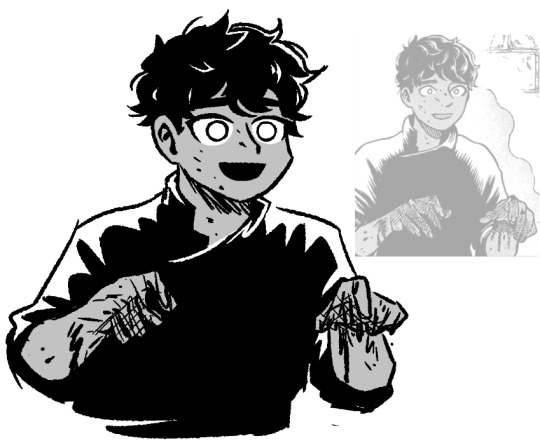
that one panel of kabru i think about a lot
42 notes
·
View notes
Text
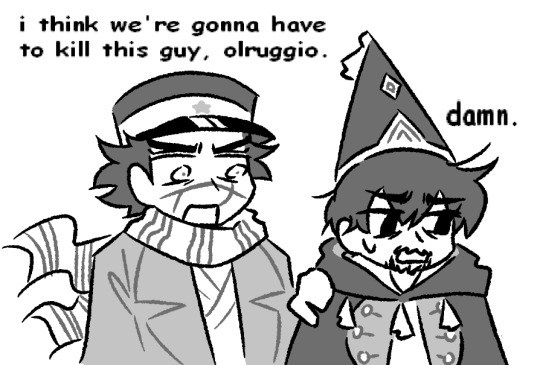
posting this twitter meme doodle here too cuz i think it's funny
og:
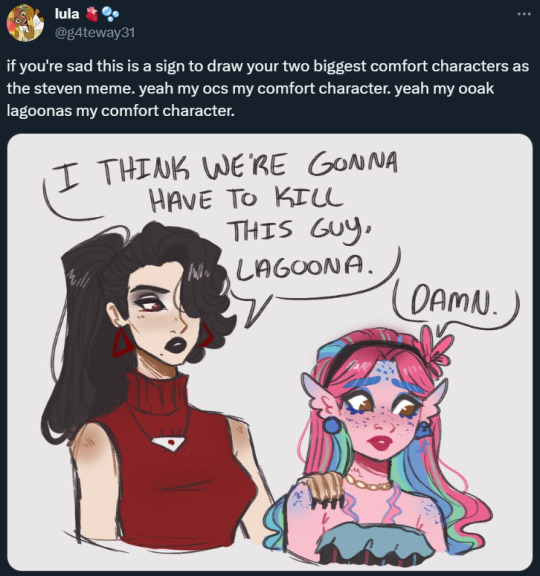
#sugimoto saichi#olruggio#golden kamuy#witch hat atelier#they are both my wives and i love them so much#any gk + wha fans in chat#what's funny is that sugimoto quite literally have said this to asirpa before and olruggio does have the right to kill someone#if i said who that someone is i'll probs get shot#anyways i'm disappointed that i've yet to see someone use a wha character with this meme like damn#bork doodles
152 notes
·
View notes
Text
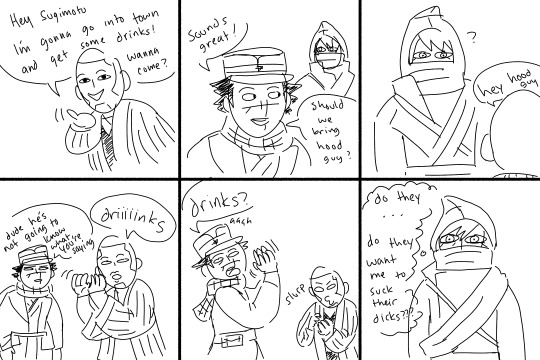
language barrier
1K notes
·
View notes
Text
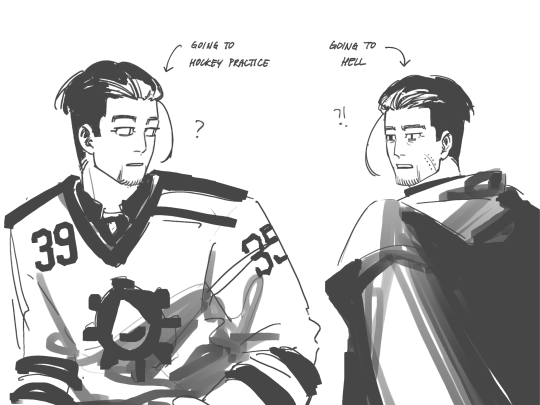
quick doodle, congratulations to ogata for his reincarnation from a war to a sports team! hope this guy's just as funny as his war criminal counterpart
#i hope he dies in this universe too#slash half joking#im so sorry no 39 all you did was appear in one panel and everyone is either after your throat or your ass#lovely doodle op#golden kamuy#dogsred
2K notes
·
View notes
